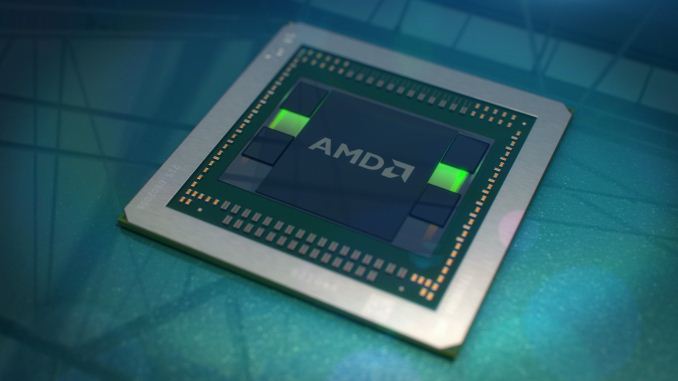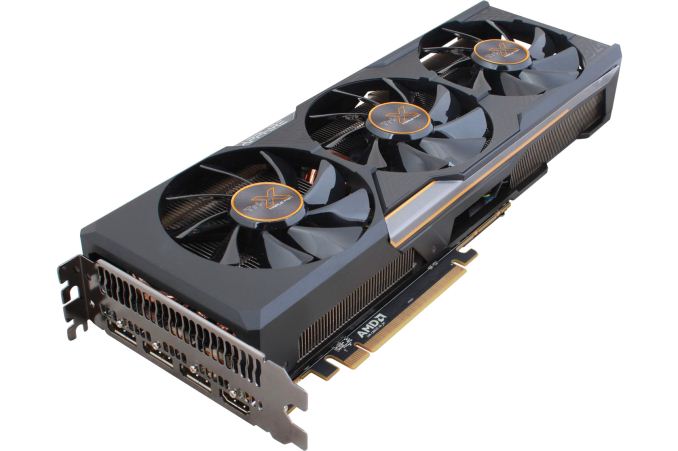The AMD Radeon R9 Fury Review, Feat. Sapphire & ASUS
by Ryan Smith on July 10, 2015 9:00 AM ESTFinal Words
Bringing this video card review to a close, we’ll start off with how the R9 Fury compares to its bigger sibling, the R9 Fury X. Although looking at the bare specifications of the two cards would suggest they’d be fairly far apart in performance, this is not what we have found. Between 4K and 1440p the R9 Fury’s performance deficit is only 7-8%, noticeably less than what we’d expect given the number of disabled CUs.
In fact a significant amount of the performance gap appears to be from the reduction in clockspeed, and not the number of CUs. And while overclocking back to R9 Fury X clockspeeds can’t recover all of the performance, it recovers a lot of it. This implies that Fiji on the whole is overweight on shading/texturing resources, as it’s not greatly impacted by having some of those resources cut off.
Consequently I can see why AMD opted to launch the R9 Fury X and R9 Fury separately, and to withhold the latter’s specifications until now, as this level of performance makes R9 Fury a bit of a spoiler for R9 Fury X. 7-8% makes R9 Fury notably slower than R9 Fury X, but it’s also $100 cheaper, or to turn this argument on its head, the last 10% or so that the R9 Fury X offers comes at quite the price premium. This arguably makes the R9 Fury the better value, and not that we’re complaining, but it does put AMD in an awkward spot.
As for the competition, that’s a bit more of a mixed bag. R9 Fury X had to compete with GTX 980 Ti but couldn’t surpass it, which hurt it and make the GTX the safer buy. On the other hand R9 Fury needs to compete with just the older GTX 980, and while it’s by no means a clean sweep for AMD, it’s a good outcome for AMD. The R9 Fury offers between 8% and 17% better performance than the GTX 980, depending on if we’re looking at 1440p or 4K. I don’t believe the R9 Fury is a great 4K card – if you really want 4K, you really need more rendering power at this time – but even at 1440p this is a solid performance lead.
Along with a performance advantage, the GTX 980 is also better competition for the R9 Fury (and Fiji in general) since the GTX 980 is only available with 4GB of VRAM. This negates the Fiji GPU’s 4GB HBM limit, which is one of the things that held back the R9 Fury X against the GTX 980 Ti. As a result there are fewer factors to consider, and in a straight-up performance shootout with the GTX 980 the R9 Fury is 10% more expensive for 8%+ better performance. This doesn’t make either card a notably better value, but makes the R9 Fury a very reasonable alternative to the GTX 980 on a price/performance basis.
The one area where the R9 Fury struggles however is power efficiency. GTX 980’s power efficiency is practically legendary at this point; R9 Fury’s is not. Even the lower power of our two R9 Fury cards, the ASUS STRIX, can’t come close to GTX 980’s efficiency. And that’s really all there is to that. If energy efficiency doesn’t matter to you then the R9 Fury’s performance is competitive, otherwise GTX 980 is a bit slower, a bit cheaper, and uses a lot less power. That said, AMD’s partners do deserve some credit for keeping their acoustics well under control despite the high power and heat load. It’s not an apples-to-apples comparison against the reference GTX 980 and its blower, but at the very least picking R9 Fury over GTX 980 doesn’t mean you have to pick a loud card as well.
And that brings us to the third aspect of this review, which is comparing the R9 Fury cards from Sapphire and ASUS. Both partners have come to the plate with some very good open air cooled designs, and while it’s a bit unusual for AMD to launch with so few partners, what those partners have put together certainly paint R9 Fury in a positive light.
Picking between the two ends up being a harder task than we expected, in part because of how different they are at times. From a performance perspective the two cards offer very similar performance, with Sapphire’s mild factory overclock giving them only the slightest of edges, which is more or less what we expected.
However the power and acoustics situation is very different. On its own the ASUS STRIX’s acoustics would look good, but compared to the Sapphire Tri-X’s deliciously absurd acoustics it’s the clear runner-up. On the other hand the ASUS card has a clear power efficiency advantage of its own, but I’m not convinced that this isn’t just a byproduct of the ASUS card randomly receiving a better chip. As a result I’m not convinced that this same efficiency advantage exists between all ASUS and Sapphire cards; ASUS’s higher voltage R9 Fury chips have to go somewhere.
In any case, both are solid cards, but if we have to issue a recommendation then it’s hard to argue with the Sapphire Tri-X’s pricing and acoustics right now. It’s the quietest of the R9 Fury cards, and it’s slightly cheaper as well. Otherwise ASUS’s strengths lie more on their included software and their reputation for support than in their outright performance in our benchmark suite.
And with that, we wrap up our review of the second product in AMD’s four Fiji launches. The R9 Fury was the last product with a scheduled launch date, however AMD has previously told us that the R9 Nano will launch this summer, meaning we should expect it in the next couple of months. With a focus on size and efficiency the R9 Nano should be a very different card from the R9 Fury and R9 Fury X, which makes us curious to see just what AMD can pull off when optimizing for efficiency over absolute performance. But that will be a question for another day.












288 Comments
View All Comments
bill.rookard - Friday, July 10, 2015 - link
Impressive results, especially by the Sapphire card. The thing I'm glad to see is that it's such a -quiet- card overall. That bodes well for some of the next releases (I'm dying to see the results of the Nano) and bodes well for AMD overall.Two things I'd like to see:
1) HBM on APU. Even if it were only 1GB or 2GB with an appropriate interface (imaging keeping the 4096 bit interface and either dual or quad-pumping the bus?). The close location of being on-die and high speed of the DRAM would be a very, VERY interesting graphics solution.
2) One would expect that with the cut down on resources, there would have been more of a loss in performance. On average, you see a 7-8% drop in speed after a loss of 13-14% cut in hardware resources and a slight drop in clock speeds. So - where does that mean the bottleneck in the card is? It's possible that something is a bit lopsided internally (it does however perform exceptionally well), so it would be very interesting to tease out the differences to see whats going on inside the card.
mr_tawan - Friday, July 10, 2015 - link
It would be very interesting to run HBM as the system ram instead of DDR on APU. 4GB (for the 1) wouldn't be a lot and may choke on heavy work load, but for casual user (and tablet uses) that's probably enough.It would also allow smaller machine than NUC form factor, I think.
looncraz - Friday, July 10, 2015 - link
HBM wouldn't be terribly well suited for system RAM due to its comparatively low small-read performance and physical form factor. On an APU, for example, it would probably be best used as a single HBM[2] chip on a 1024-bit bus. Probably just 1 or 2GB, largely dedicated to graphics. That is 128GB/s with HBM1 (but 1GB max), 256GB/s with HBM2 (with, IIRC, 4GB max).For a SoC, though, such as the NUC form factor, as you mentioned, it is potentially a game changer only AMD can deliver on x86. Problem is that the net profit margins in that category are quite small, and AMD needs to be chasing higher net margin markets (net margin being a simple result of market volume, share, and product margin).
I'd love to see it, though, for laptops. And with Apple and AMD being friendly, we may end up seeing it. As well as probably seeing it find its way into the next generation of consoles.
Oxford Guy - Saturday, July 11, 2015 - link
Given the high prices Intel is charging for its NUC systems are you really certain it's not profitable? Perhaps sales aren't good because they're overpriced.Stuka87 - Friday, July 10, 2015 - link
The only way to keep the 4096bit bus would be to use four HBM chips, and I highly doubt this would be the case. I am thinking an APU would use either a single HBM chip, or possibly two. The performance boost would still be huge.ajlueke - Friday, July 10, 2015 - link
1) I can't imagine we won't see this. APU scaling with RAM speed was pretty well documented, I would be surprised if there were socket AM4 motherboards that incorporated some amount of HBM directly. Also, AMD performs best against NVidia at 4K, suggesting that Maxwell may be running into a memory bandwidth bottleneck itself. It will be interesting to see how Pascal performs when you couple a die-shrink with the AMD developed HBM2.2) It does suggest that Fiji derives far more benefit from faster clocks versus more resources. That makes the locked down voltages for the Fury X even more glaring. You supply a card that is massively overpowered, with 500W of heat dissipation but no way to increase voltages to really push the clock speed? I hope we get custom BIOS for that card soon.
silverblue - Saturday, July 11, 2015 - link
As regards APU scaling, it's a tough one. More bandwidth is good, however scaling drops above 2133MHz which shows you'd need more hardware to consume it. Would you put in more shaders, or ROPs? I'd go for the latter - don't APUs usually top out at 8 ROPs? Sure, add in more bandwidth, but at the very least, increase how much the APU can actually draw. The HD 4850 had 32 TMUs (like the 7850K) but 16 ROPs, which is double that on offer here.I keep seeing complaints about AMD's ROP count, so perhaps there's some merit to them.
Nagorak - Sunday, July 12, 2015 - link
It's hard to say what the bottleneck is with memory scaling on APUs. It could be something related to the memory controller built into the CPU rather than the GPU not having the resources to benefit.silverblue - Monday, July 13, 2015 - link
Isn't there a 256-bit Radeon Memory Bus link between memory and the GPU? Just a question.Stuka87 - Friday, July 10, 2015 - link
Is it just me, or is the 290X faster now than it used to be when compared to the 980? Perhaps the 15.7 drivers offered some more performance?